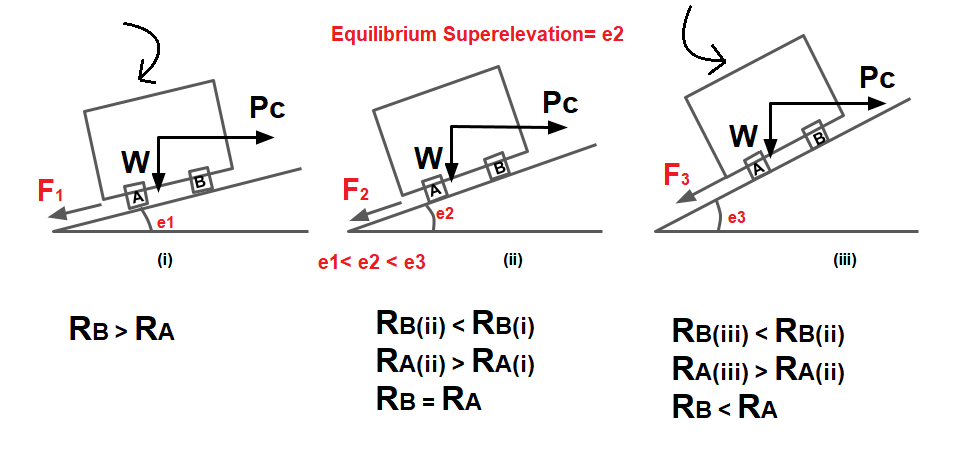Equilibrium Superelevation:

Note: This topic is part of the second chapter of Highway Engineering. I suggest reading this topic in the context of the complete chapter: Geometric Design of Highway. If you want to read the entire Highway Engineering, click here: Highway Engineering.
Equilibrium superelevation is that superelevation at which pressure at the inner and outer tyre will be equal. if the coefficient of friction is neglected i.e. f =0 then,
e=\(\frac{V^{2}}{127R}\) , V in km/h
This means that if a road surface is super elevated by tan-1\(\frac{V^{2}}{127R}\) then the friction force will not be called upon to act and thus the pressure on both the wheel will be equal.
eequilibrium =\(\frac{V^{2}}{127R}\)
If the superelevation provided is less than eequilibrium lateral fiction will come into play and will go on increase as the superelevation gets reduced.
Note⇒ Due to equilibrium superelevation:
- No overturning, No Toppling, No Skidding, No Sliding.
- Pressure at the inner and outer tyre will be equal.
Superelevation As Per IRC
1.Maximum Superelevation
| Type of Road | Maximum Superelevation (emax) |
| Urban Road | 4% or 0.04 |
| Plain & Rolling Terrain | 7% or 0.07 |
| Mountainous & Steep Terrain | 10% or 0.10 |
2.The minimum superelevation
It is provided on a road must not be less than the camber of the road for the adequate drainage of water from the surface.
hi :))